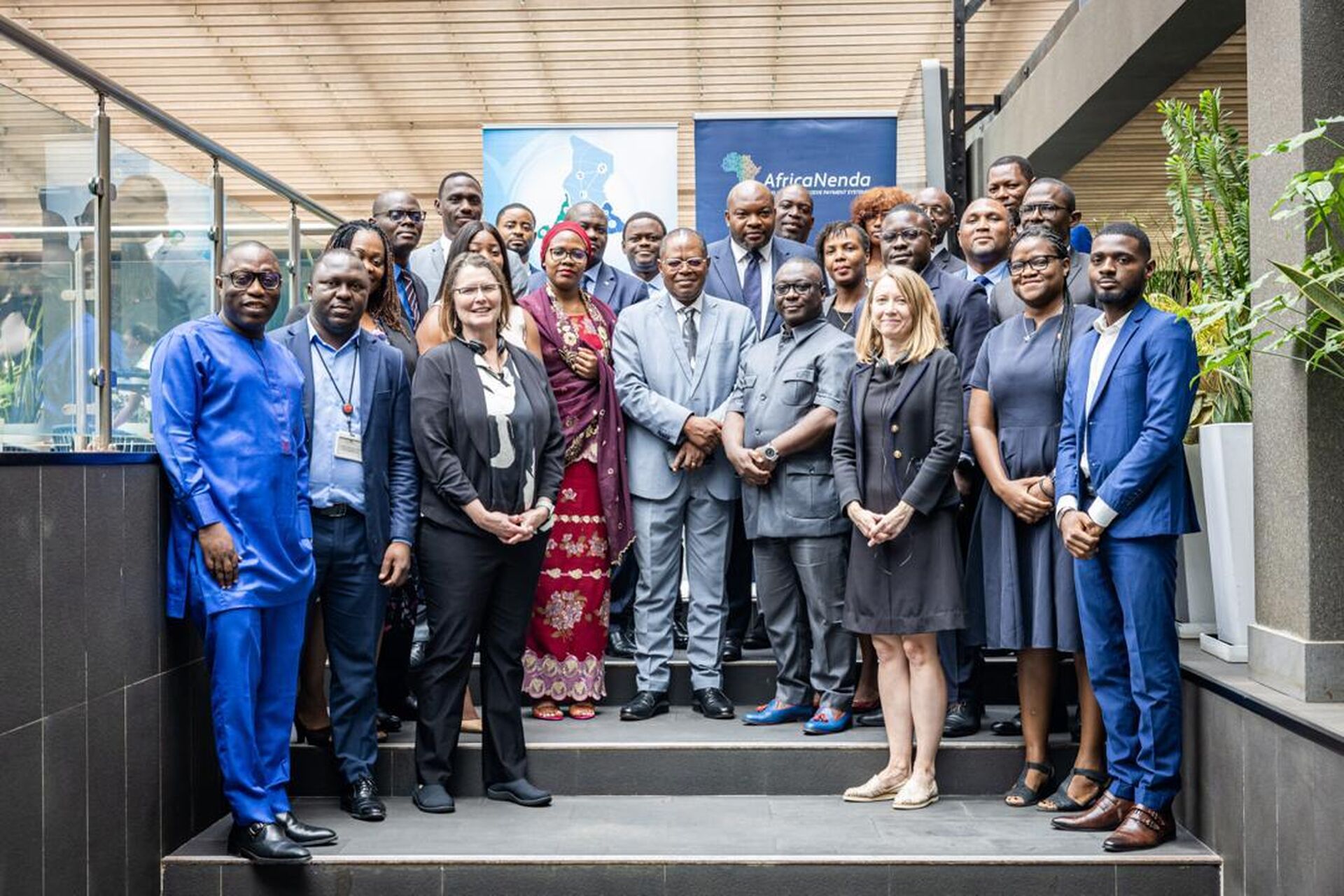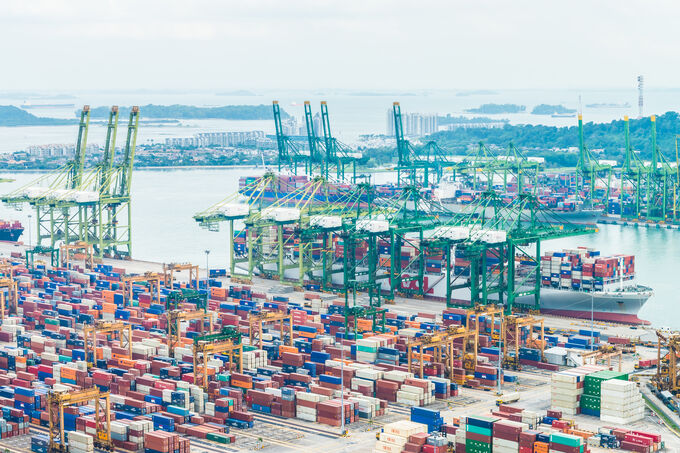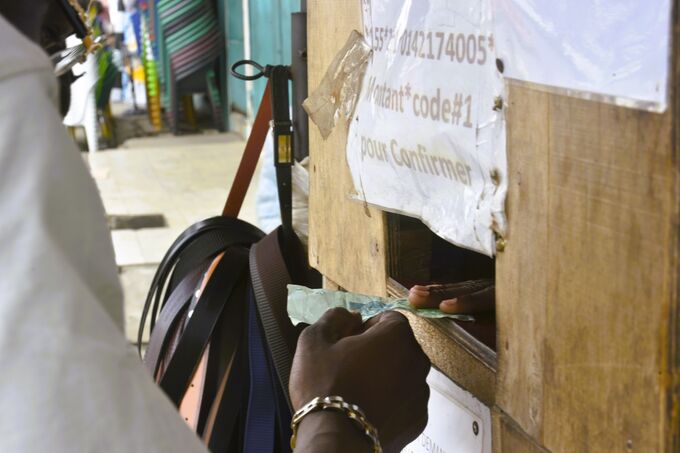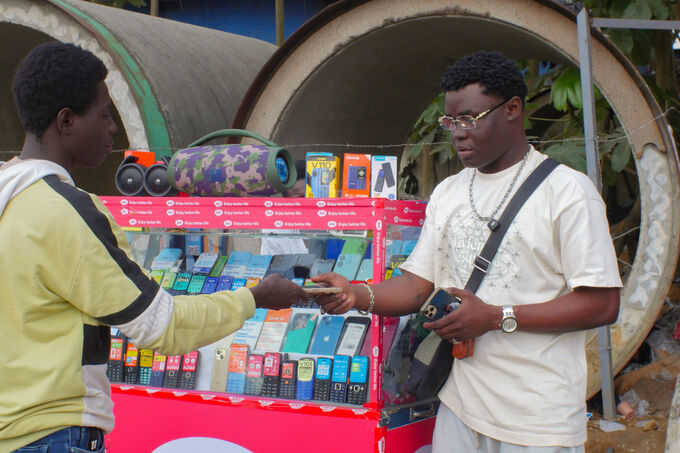
News
Expert Talk: The State of Digital Payments in West Africa — Jamelino Akogbeto Shares Key Lessons
by Jamelino Akogbeto - 12 February 2025

Jamelino Akogbeto is an expert in digital financial services and payment systems. He spearheads the AfricaNenda Foundation’s work in the West Africa region with a focus on building a strong pipeline of payment projects and increasing investments in inclusive instant payment systems. In this Q&A, Jamelino shares his insights on the West African market and AfricaNenda’s work in the region.
Q: What has been the focus of your work in the West African market beginning in 2021?
Since AfricaNenda’s official launch in 2021, I have been working to understand the payment landscape and explore different options for accelerating inclusive instant payment systems (IIPS) in Africa. That has involved engaging key stakeholders around IIPS initiatives, promoting IIPS knowledge throughout the ecosystem, and developing payment system projects with the goal of embedding inclusivity and sustainability from the outset.
In West Africa specifically, we have been supporting both domestic payment system projects in specific countries, and regional projects. We have facilitated capacity building and hosted learning events to share best practices, and we have conducted research in West Africa on behalf of the West African Monetary Agency. The AfricaNenda Foundation is also engaged with Cabo Verde and Guinea on the deployment of their inclusive instant payment systems.
Q: Can you describe the unique characteristics of the West African market for digital payments and financial inclusion?
West Africa is one of the continent’s biggest markets with high potential for growth in digital payments. According to data from the Global Findex, as of 2022, 45% of adults in West Africa had either a bank or mobile account, less than 20% of them made merchant payments, and less than 25% paid their utilities digitally. This suggests high opportunity to expand access and usage of digital payments, and through their benefits promote digital account adoption.
Consider the West Africa Economic and Monetary Union (WAEMU) part of the region, with eight member countries that share the same currency (the franc de la Communauté financière de l'Afrique, or CFA franc) and the same Central Bank (the Central Bank of West African States, or BCEAO). This regional market provides numerous opportunities, such as enabling cross-border remittances, especially with the start of the pilot of the regional payment system interconnecting digital financial services providers.
The Economic Community of West African States (ECOWAS) also shows promise due to its high and growing mobile money penetration—with 290 million registered accounts, ECOWAS is the fastest growing subregion in Africa (GSMA, 2023). More importantly, ECOWAS represents a regional economic integration success story. Its ambition to establish a regional payment framework offers an amazing opportunity for cross-border remittances. Once established, that framework will pave the way for economic cooperation among member states, resulting in increased living standards and economic development.
Q: What are the key opportunities you’ve identified in this market?
Digital Public Infrastructure (DPI) is seen as a strong option for creating shared, society-wide infrastructure, given the cost and time benefits. It is under serious consideration by countries that are in the process of building digital payment systems.
Cross-border remittances potential is also high, especially with the ongoing pilot on the regional payment system by BCEAO. The West African Monetary Agency, a specialized agency of ECOWAS, also has an initiative to integrate all domestic payment systems in the region, which may create a great opportunity to increase cross-border remittances in the region.
The financial regulatory framework reforms underway are promoting an enabling environment for fintechs, including through new payment services regulations adopted by BCEAO.
Last but not the least, AfricaNenda-led partnership and capacity building initiatives, including peer-learning events, have highlighted the key role that the domestic IPS Nigeria Inter-Bank Settlement System (NIBSS) and Ghana Interbank Payment and Settlement System (GhIPSS) can play as payment pioneers in the region.
Q: What specific challenges have you encountered in West Africa and how have you addressed them?
The challenges we have encountered as AfricaNenda are not specific to the West Africa region. Some of them are obstacles to the acceleration of IIPS in Africa. They include lack of adequate infrastructure, low perception of the value proposition of IPS by the private sector, inadequate regulatory framework, lack of skills, etc.
The other challenges are related to the post-deployment stage, including a lack of financial and digital capabilities by end users, low customer experience, inappropriate rules or no rules, inadequate customer protection framework, and so on. These latter challenges tend to affect customer adoption.
These challenges are all taken into account in the design of our interventions. We mitigate them through our pre-project work to make sure rails and rules are in place and that conditions are met before conceptualization. We also leverage our program management framework to make the deployment successful and create conditions for scaling and sustainability through different tools, capacity building, and constant support.
Q: Over the past three years, what have been your most significant takeaways from working in this region?
My key takeaways from the last three years are threefold:
First, there has been progress in the region with the deployment of new IPS, such as the BCEAO regional system in WEAMU. However, the cross-border remittances initiatives are still being explored and have not been adopted as a use case due to several obstacles related to the harmonization of regulatory frameworks. This includes the currency conversion challenges.
A second lesson is that commitment is the most important asset to succeed in an instant payment system deployment. Countries that have shown a high level of engagement with both public- and private-sector stakeholders better prepared to deploy their systems successfully.
Third, there is a growing interest in digital public infrastructure, as stakeholders currently understand they can leverage it to build cost-effective systems with a reduced time-to-market and less dependency on technology vendors. Three years ago, this focus on DPI did not exist. On the contrary, stakeholders in the region were hesitant to embrace such systems.

Q: Can you share an example of a project or initiative that taught you valuable lessons?
The last engagement with Cabo Verde was full of lessons.
Enabling the digital payment landscape is helping to promote the Cabo Verde government's strategic focus on tourism. With 12,630 card terminals, Cabo Verde is almost as equipped as all WAEMU (15,000) and much more than the Central African Economic and Monetary Community (CEMAC)(4,000).
The Cabo Verde example also showed how DPI can be leveraged to reduce the time-to-market significantly. The end-to-end pilot for the country was developed in less than six months because it leveraged resources with the potential to enable society-level scale, including existing open-source technologies, Cloud hosting, services and an accelerator program to strengthen local project unit skills.
The high level of commitment of the central bank and the consultative stakeholder engagement approach also paved the way for success. They can be considered as best practices for other countries deploying their own systems.
Q: What strategies or innovations do you believe will make the most impact in the coming years?
In terms of innovations, trends show that open-source technologies can fastrack the deployment of an IPS and reduce cost. It may become one of the strongest options in the region.
In terms of strategies, it is important to promote more digital payments in markets where cash is still the default. For instance, in Benin, the government enacted a law to apply a 1% tax on all cash payments over 100,000cfa+ (USD $150). This approach provides an incentive to support the transition from cash to digital; an example that can be replicated in more countries to encourage digital payments.
Q: How can governments, the private sector, and development partners better support growth in this region?
The key for payment system growth is to establish a public-private collaboration framework. Governments, with support from development agencies, can work closely with key players to build an enabling environment. It requires initiatives to modernize the regulation, improve the infrastructures, help develop digital skills, and promote government payment digitalization. The private sector should also play its part by investing more in innovation and increasing customer centricity. All this should translate into a strong value proposition for the end-user. Without that, there is no sustainable growth.
Q: Looking ahead, what are your priorities for advancing digital payments in the West African market?
I see three key priorities for the coming years.
First is to support the countries that have no IPS to develop and deploy their domestic payment systems.
Second is to strengthen existing payment systems to enhance their inclusivity and promote their adoption—and thereby their sustainability—using our program management framework.
Third is to promote cross-border remittances by exploring regional integration opportunties through the interconnection of existing instant payment systems within or out of the region.


